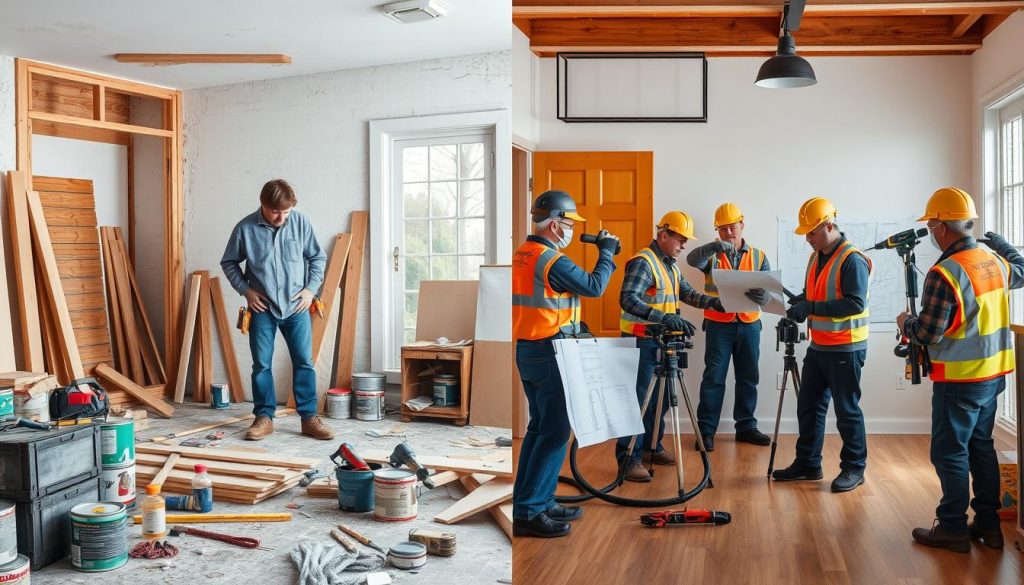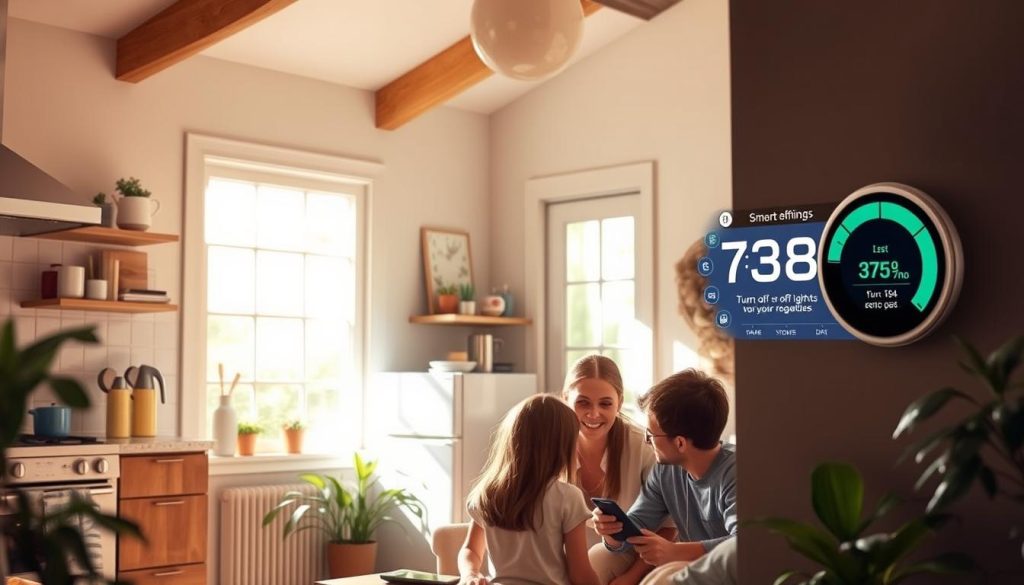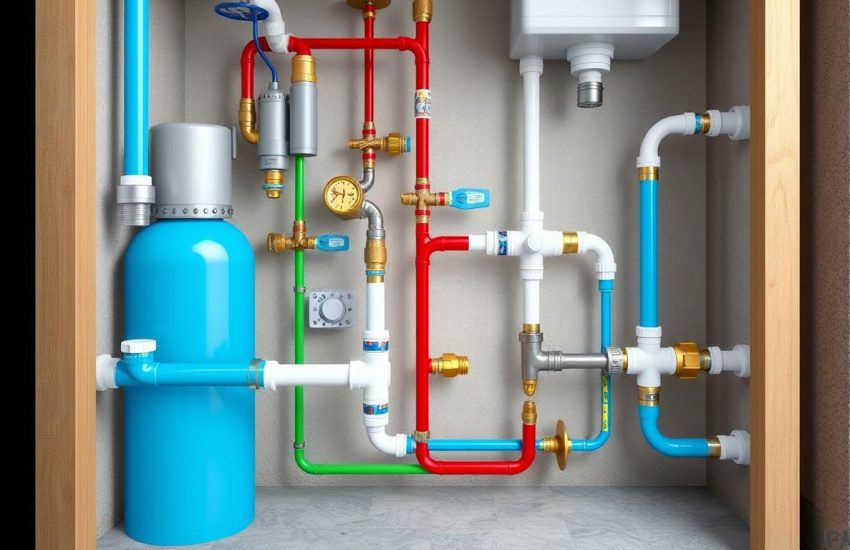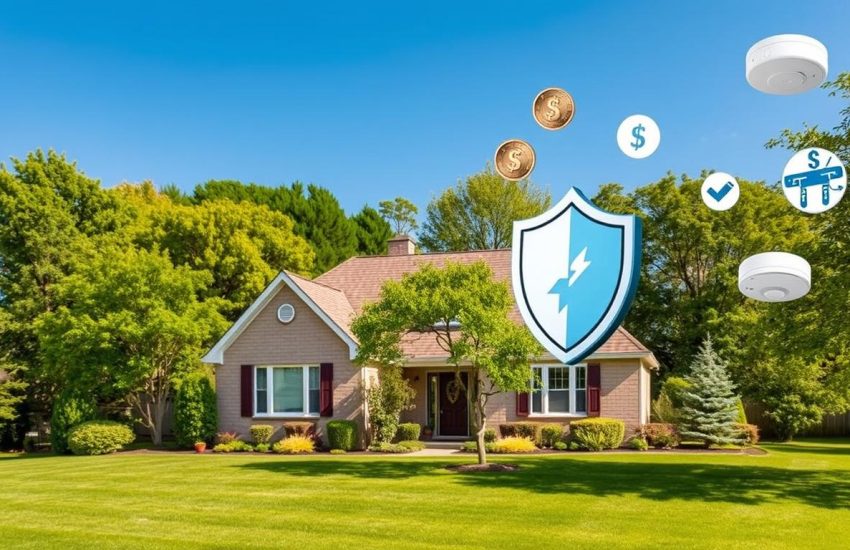Saving On Utilities: A Complete Guide for Homeowners
Have you thought about your utility bills being too high? In today’s world, saving money on home improvement and utilities is important. Homeowners and renters spend an average of $5,640.72 on utilities each year. The real question is how much can you save.
Get ready to cut down on electricity, which takes up 23% of your monthly bills, averaging $121.01. You can lower these costs and still enjoy your home. This guide aims to help you save on energy and live greener.
Using LED lights and timing energy-heavy tasks can make a big difference. Californians facing a 12.8% electricity rate hike need to save wherever they can. With energy audits and efficient appliances, lowering your bills is possible. Smart homeowners know small changes can lead to big savings. Let’s explore how to save money and the planet together.
Key Takeaways:
- Understanding your utility costs can lead to strategic savings.
- Electricity typically represents the largest portion of utility expenses.
- Energy-efficient appliances and habits are pivotal to reducing bills.
- California’s rising electricity costs make savings techniques even more vital.
- Energy audits can significantly cut costs and increase home efficiency.
- Adjusting water heater temperatures and using LED lights can lead to noticeable savings.
- Optimizing energy usage during off-peak hours is a smart way to save money on utilities.
Why Focus on Saving on Utilities?
In today’s world, saving on utilities is very important. Focusing on DIY saving on utilities helps save money. It also is good for the planet. Making your home more energy-efficient cuts costs and helps the environment.
Now, let’s look at easy, budget-friendly improvements. These can greatly lower your utility bills:
- Replacing traditional incandescent bulbs with Energy Star-certified LED bulbs, which save up to 90% on energy consumption.
- Minimizing standby energy that accounts for 5 to 10% of residential energy use could save up to $100 annually.
- Using smart thermostats can decrease heating and cooling bills by approximately 8%.
- Opting for Energy Star-certified appliances like clothes washers and heat pump water heaters which use less energy and water.
- Enhancing your home’s insulation and sealing air leaks to maximize heat control and minimize energy wastage.
Getting better rates for utilities like gas and electricity in Ohio can also help. Platforms like Energy Choice Ohio let people compare rates. This helps them choose the best option for their needs and budget.
Budget-friendly improvements make your home better and more comfortable. They are key for living sustainably. Making your home energy-efficient lowers your bills. It also encourages others to live in an environmentally friendly way.
| Upgrade | Annual Savings | % Reduction in Energy Use |
|---|---|---|
| LED Bulbs | Up to 90% | Significant |
| Smart Thermostats | Approx. 8% on heating and cooling | Moderate |
| Energy Star Appliances | Up to $550 (heat pump water heater) | 20-30% |
| Insulation & Ventilation | Up to 20% on heating and cooling | Significant |
It’s clear that having an energy-efficient home is more than just saving money. It’s about caring for our planet and future.
DIY vs Professional Help
Homeowners choosing between energy-efficient upgrades face a tough decision. They wonder whether to do it themselves or get professional help. This choice affects cost, safety, and how well the upgrades work.
DIY projects like adding simple flooring are popular because they are easy. They also make you feel good right away. Yet, for hard tasks such as electrical work, the risks may be too high. For example, changing a light fixture might seem easy. But nearly 400 people get electrocuted in the US each year doing such tasks. Switching to energy-efficient LED lighting is one area where DIY might be okay. Still, you must be very careful.
On the other hand, professional home improvement services bring knowledge and responsibility. This is true for big jobs like installing electric vehicle chargers or updating electrical systems. These jobs need a lot of technical know-how. They also must follow local rules and insurance terms, which can be hard for most homeowners.
Professionals are also vital for adding smart home tech. This tech can put more demand on old electrical systems. Here, a licensed electrician’s skills are key. They ensure everything gets installed right and stays safe and efficient.
- DIY Tasks: Light electrical installations, simple flooring installations.
- Professional Tasks: Electric vehicle charger installation, smart home system integration, extensive electrical upgrades.

Choosing DIY or professional help depends on the project’s complexity. It also depends on the risks and how much you’ll gain from the upgrade. DIY saves money on easy projects. But professional help is best for safety, following rules, and making sure complex systems work right. Mixing small DIY energy-saving steps with professional help often gives the best mix of efficiency and savings.
In the end, it’s about knowing your limits and when to seek expert advice. This balance makes your home work better. It also keeps its value and everyone safe.
How to Save Money
To really cut down on utility bills, we need some smart steps and changes. Doing these can lower your bills and help our planet. Let’s dive into ways to save on your home utilities:
- Adjust Your Thermostat: By setting your thermostat 7-10 degrees lower during the winter or higher during the summer for 8 hours a day, you could reduce your heating and cooling costs by up to 10% annually.
- Optimize Water Heating: Lowering your water heater to 120 degrees Fahrenheit can save you hundreds each year, preventing unnecessary over-heating.
- Curtail Phantom Energy: Unplug devices when not in use to prevent up to $100 in energy losses annually—small changes, big savings.
- Update Lighting Solutions: Switching to LED bulbs can cut lighting costs by up to $225 each year, utilising 90% less energy than traditional bulbs.
- Invest in Energy Star Appliances: These appliances can use 20% less energy, providing a quicker return on investment and lower energy bills.
| Energy Saving Measure | Expected Savings | Investment Return Period |
|---|---|---|
| LED Lighting | $225/year | Varies |
| Solar Panels | Reduce to $0 (after payback) | 6-12 years |
| Thermostat Adjustment | 10% off heating/cooling costs | Immediate |
| Energy Star Dishwashers | 2 gallons/cycle saved | 5-10 years |
Use these steps for a good plan to pay less for utilities. By doing more than one change, you can save even more energy.

Step-by-Step Upgrades
Making your home more energy efficient is good for Earth. It also adds to your home’s value. Plus, it cuts down on your bills.
Start with small steps like using LED instead of regular bulbs. LEDs use up to 75% less energy and last up to 25 times longer.
Then, think about getting a smart thermostat. It learns your routine to save energy. You can control it with your phone from anywhere.
Next, add good insulation and seal your home well. It keeps the temperature steady. This means your systems work less, saving you money. Putting in windows that keep heat inside is also smart.
Also, don’t forget about phantom loads. Use smart power strips to stop wasting electricity. This can cut your power use by 10% of annual electricity usage.
Think about water-saving fixtures next. Also, get Energy Star certified machines. They save water and energy.
Keeping your home efficient isn’t just about new stuff. Take care of what you have. Get your systems checked yearly. This keeps them working well.
| Upgrade | Energy Savings | Additional Benefits |
|---|---|---|
| LED Lighting | Up to 75% less energy | Lasts 25x longer than traditional bulbs |
| Smart Thermostats | Reduces unnecessary heating/cooling | Remote control via apps |
| Smart Power Strips | Eliminates phantom loads | Reduces 10% of annual electricity usage |
In conclusion, upgrading your home step by step is smart. It makes your home better and helps the planet. Each upgrade saves resources and supports a greener life. This leads to big savings and a happier Earth.
Final Tips for Success
Try to optimize energy savings and make your home work better. Simple steps can lead to big changes. Switching to LED lights saves energy and money since they last longer. Smart thermostats can cut your heating costs by 15%. Unplugging chargers and appliances also helps save power.
Don’t forget the outside of your home. Planting trees gives shade and cools your house, cutting down on air conditioning. Using cool roofs or solar panels saves about 15% on energy each month. It helps the planet, too. Make sure your fridge is sealed tight. It can save a lot of energy.
Keeping your home working right is key. Clean your HVAC systems often and use your dishwasher or washing machine only when full. This really cuts down on bills. Using good insulation and energy-saving appliances helps too. In some places, you could spend over $4,196 a year on utilities. To learn more about saving money on home improvements, check out this guide. Follow these steps to make your home and budget happy.



